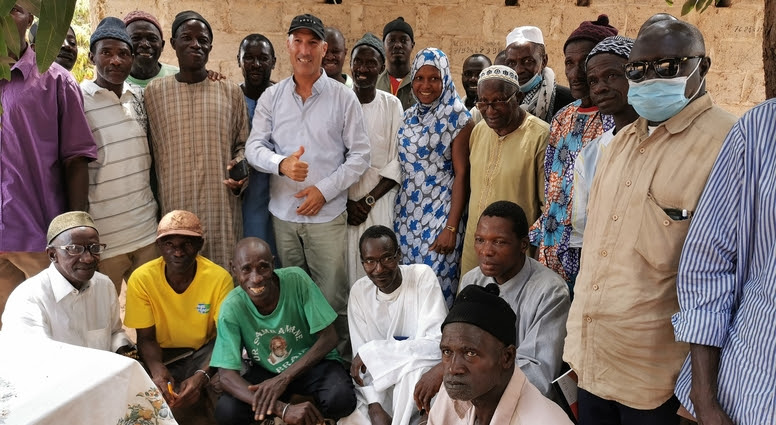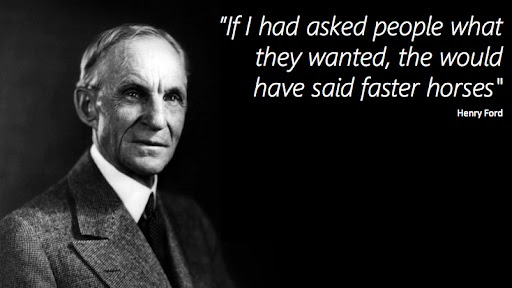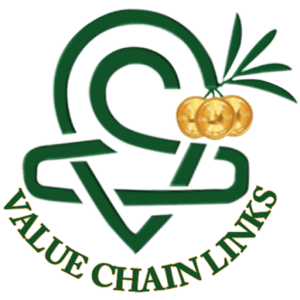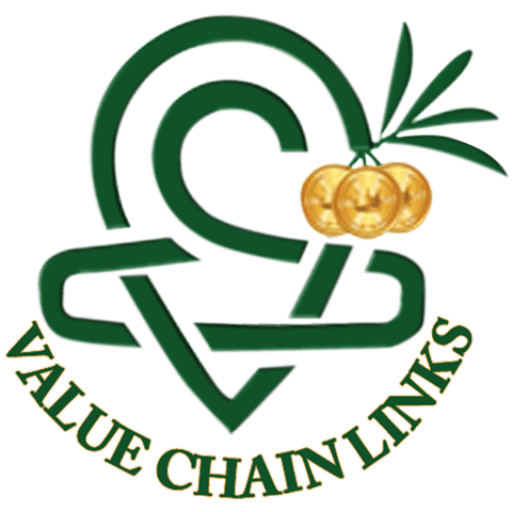WHY LEADERS SHOULD FOCUS ON NEEDS?

BY Dr. Nimrod Israely

| Let me start with a story about the days of late 1988, when after my military service, I returned to agriculture. If you had anything to do with plant protection, the following story must sounds familiar to you. When I became responsible for plant protection in my kibbutz plantations, I contacted veteran workers in my team and experts from the Ministry of Agriculture. I asked them, ‘how can I improve plant protection.’ To that simple question, I received many answers that typically sound like this –Replace Insecticide X with insecticide Y…, replace the sprayer…, replace the tractor…, spray at a higher/lower volume…, drive faster/slower when spraying…, increase sprays’ intervals…, change pesticide concentration…, etc. Undoubtedly, I learned a lot, and as a result, I became an expert in spraying. I even started giving lectures on crop protection spraying technologies and methods. But, although I did it well, ‘spraying better‘ was never my goal or passion. NOTE THE QUESTION AND ANSWERS My question was: “how can I improve plant protection?” All people I contacted had a pre-assumption that ‘Improve Plant Protection=Spraying”. In their eyes, Spraying means improving Plant Protection. Therefore, they interpreted my question as if I asked, “how can I improve the application of spraying?” Hence, their answers were relevant to how they perceived the question. For me, spraying was a pest control method having many downsides. I viewed it as a clumsy and unhealthy way of getting rid of pests and keeping my fruits in good shape for marketing. For my colleague’s things were different, many viewed spraying as The (single and the best) Solution. Sadly, some of them still see it this way until today. Since they viewed spraying as The Solution, none of them said – “The way to improve plant protection is to STOP spraying, and advance to non-spraying technics.” A typical farmer would NOT ask himself: “What do I WANT from plant protection?” In other words, what are my expectations from plant protection? “The typical question would be: “I want the spray to be more efficient and less costly so that I can save money on plant protection.” Does it sound familiar to you? As an expert in spraying, I knew it offers no hope for improved health, better economic, nor for more effective plant protection. For me, it was visible and even evident that I need a crop protection solution, which is focused on the end consumers. Meaning, I (the marketer) need to be market-oriented and think like one. Hence, crop protection needs to be highly effective, zero chemical residues, eco-friendly, and easy to use. Now, I had to bridge the gap between to, seemingly, contradicting questions –”What do I NEED to do to increase my income?” And, “Will plant protection support or disrupt the achievement of my business goals?” Now my answer changed according to the new focus from being spraying plant protection oriented to business marketing-oriented. I said to myself, “My consumers would like to have beautiful fruits, tasty, and healthy, growing in a healthy – chemicals free environment. Therefore, this is what I need to get“. At this point, I had no idea how this can be done, but I had a clear view of what I needed to achieve. I searched for such a solution, but unfortunately, nothing in the shape of my vision existed, so I had to develop one. Five years later, in the summer of 1998, I deployed the first prototype of the FreeDome, zero spraying, an highly effective fruit fly control solution, zero chemical residues, eco-friendly, and user-friendly. Moving from 100% reliance on Spraying to 0% fruit fly spraying became possible thanks to first – changing the question and second – giving a non-biased answer.  . .No one ever came to me and asked for a crop protection solution that is non-spraying yet better than spraying, or for a fruit fly solution working under rainy weather as well as under hot-dry ones. Why? Because farmers ‘know’ that the solution for pests is insecticide sprays. Hence, they just want a better cost-effective spray. People do not ask for what they do not know or for something that is out of the range of their current imagination. “Some people say, ‘Give the customers what they want.’ But that’s not my approach. Our job is to figure out what they’re going to want before they do. I think Henry Ford once said,” If I’d asked customers what they wanted, they would have told me, ‘A faster horse!'” People don’t know what they want until you show it to them. That’s why I never rely on market research. Our task is to read things that are not yet on the page“. Steve Jobs That rule is valid for anyone, in any sector and position, including CEOs, Presidents, Prime Ministers, and Ministers. This column I dedicate to you, Mr. Decision Maker, who is active in a developing country. If you wish to expedite your country’s economic development, you should change your thinking and communication into – what is NEEDED. It will help you move much faster towards your goals. Here is an example from a meeting I had with a Minister of Agriculture. It reflects well the change of thinking that is so much needed. In his country, 54% of employment is in agriculture. Yet, the Minister asked if I can create 200 thousand additional jobs for the agri-sector. This is what The Minister WANTED. But is this what a country with over 54% of its population employed in agriculture NEEDS? Developing countries have incredibly challenging needs. The most cost-effective and fastest way of realizing those needs is through innovation. THREE TYPES OF INNOVATION Professor Clayton Christensen divides innovation into three types: 1. Evolution – Sustaining Innovation / Performance-Improving Innovation: The innovation to improve the quality and feature of the current product offering. 2. Revolution – Efficiency Innovation: The innovation that tries to do more with less in “manufacturing” the product offering .3. Disruptive – Market-creating Innovation / Empowering Innovation: The type of new product / service where the new entrants typically start operating from the low end of the market [>><<].In the example above, regarding the plant protection approach, the tips I received to improve it were of innovation types 1 and 2.However, the questions I asked myself, led me to develop a type 3 solution of crop protection innovation, the Free Dome [>><<].In this case, all the restrictions involved in spraying, including; tractor, sprayer, climate impacting spray, health, chemicals ban, export ban, etc. are no longer relevant. WANT VERSUS NEED Note that people talking about what they WANT are saying “I want…”. In contrast, when people talk about their NEEDS or VISION, they would speak in plural, “We need…” or they will simply refer to the public needs. In my opinion, two historical speeches stand out when we think of the “We need…” attitude, and those are -“We choose to go to the Moon…” by J.F Kennedy, and “I have a dream…”, by Martin Luther King. Both leaders stated what is needed. They stated what is needed without having the solution or an idea of how practically or even metaphorically, they can get there. Both leaders are visionary, having an entrepreneurial way of thinking, and looking for ‘innovation’ in all forms and styles. Both understand that the goals they set require considerable effort, but it will not take off without plenty of innovation. They know that “more of the same” will keep them where they are today. CLOSING ECONOMIC GAPS THROUGH INNOVATION Improving the economy is necessary for every country all the time. This is one of the main goals that citizens expect their leaders to pursue better life. Due to the COVID-19 crisis, the global economic situation has worsened for all, but weak/ low developed countries will suffer more than others will. We expect the addition of 100 million people (around the world) to join the Extreme Poverty sector, most of which will originate from the poorest countries, and probably people belonging to the agri-sector. During the COVID-19 crises, the developed countries ask themselves, “what do we want?” They have a clear answer, “We want to preserve the existing (pre-COVID-19) standard of living and our economic superiority.” At the moment, it is satisfactory for them. To achieve that, they use innovation of types 1 and 2.These countries have the resources needed to meet their primary goals (even if not easy).Then there is the dilemma of the Developing Countries. Choosing. Choosing to follow the example of the Developed Countries, by asking, “What do we want?” is useless, as they don’t have the resources required to invest (not even before the crises).So what other options do they have? Thanks for asking, and you already know what they should ask. They should ask, “What do we NEED?” In that case, we may hear leaders standing before their people, like J.F. Kennedy or Martin Luther King did, saying; “We need to close our national debt and have a positive balance of payments. We need to industrial our nation. We need to improve our productivity. We need to export more than we import. We need to eradicate poverty from our land. And we need to achieve it before this decade is over. We choose to do it in this decade and do the other things, not because they are easy, but because they are hard; because that goal will serve to organize and measure the best of our energies and skills, because that challenge is one that we are willing to accept, one we are unwilling to postpone, and one we intend to win, and the others, too.” (the part in blue is from J.F. Kennedy speech) Such leaders, choosing to take the Innovation Path to Progress, will be the ones to make a long-lasting change in their countries, and maybe in the world. They will be the ones to lead their countries from poverty to economic success, better life, and freedom of the soul and mind.  Disruptive innovation/technology [>><<].The COVID-19 crisis can be a springboard for developing countries/countries with a large portion of their population earning a living from agriculture if they exploit the crisis for a breakthrough through a type 3 of innovation. More of the same (type 1 or 2 of innovation) did not work well for those countries before the crisis, and there is no reason to believe it will do any better job now or after the crisis is over. Disruptive innovation/technology [>><<].The COVID-19 crisis can be a springboard for developing countries/countries with a large portion of their population earning a living from agriculture if they exploit the crisis for a breakthrough through a type 3 of innovation. More of the same (type 1 or 2 of innovation) did not work well for those countries before the crisis, and there is no reason to believe it will do any better job now or after the crisis is over. YOU’RE ALWAYS RIGHT Henry Ford said, “Whether you think you can, or you think you can’t – you’re right. “The.” The sort of innovation from type 3 innovation – which is required for developing countries and especially for those whose economy is based on agriculture – is not only a technological one. The innovation those countries need they will find in the fields of economic models, business models, advanced methods, and (brave) management and leaders. Then, and only then, following the innovation frog-leap, technological innovation will become a useful tool. THE GERMAN EXAMPLE From 1870 to 1943, Germany’s GDP increased slowly. That changed dramatically after World War II.A new government with a new national economic agenda replaced the previous evil under an extremist dictatorship. The new government brought a business-managerial mindset, with ample place and expectation for entrepreneurs and innovation in all its forms, including the national level. Note that while the Russian invested in East-Germany in communism, the USA invested in West-Germany in business.  . .That enabled (West) Germany to rapidly grow and continue growing until today, overcoming an endless obstacle in the way. The German example can serve as inspiration for many countries in a challenging and uncertain state. The German leadership did not ask, “what we want?” Instead, they said, “this is what we need. Now let’s make it happen“. MAKE SURE YOU DIFFERENTIATE WANT FROM NEED When people contact me, saying, “I want…” I have made it my habit to make sure that what they WANT and what they NEED resonant with their goals. My team and I invest a lot of resources looking over the horizon and trying to understand the real long-term needs that will benefit them. When we finally understand the real explicit needs and goals, we make sure they are aligned. Only then, we set targets and build a road-map and a work plan. From experience, defining the needs and goals is not an easy task but a highly rewarding one, holding the most significant long-term benefits. I am confident that African and Asian countries that are now relying on agriculture can significantly improve their situation and achieve sustained economic growth, even if their starting point is challenging with considerable uncertainty. If you wish to kick-start your economy or national scale operation using advanced economic models and agricultural technologies, contact me. Let’s see how together we can take it forward. See you soon, Dr. Nimrod Israely |


CHELANGAT BRIAN
April 1, 2021 at 7:43 pmVery insightful piece